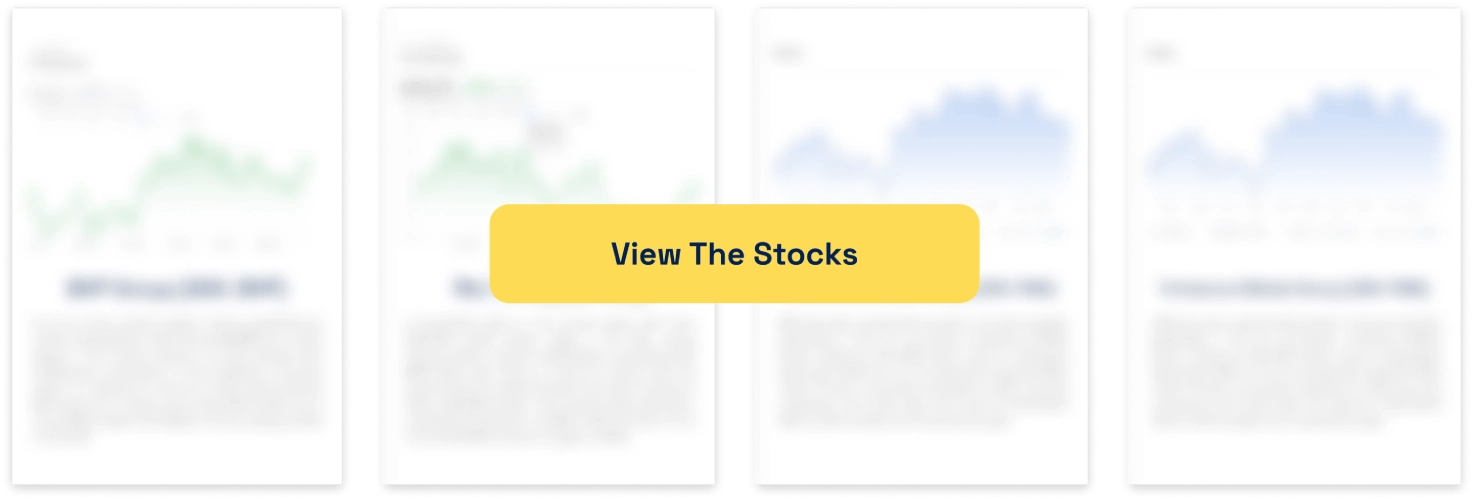RBA Interest Rate Decision: What It Means for Your Mortgage (or Savings)
Ujjwal Maheshwari, February 22, 2025
The Reserve Bank of Australia (RBA) is the nation’s leading policy-making body, instilling confidence in its decisions on monetary policy by determining the official cash rate. These decisions directly affect Australian families—impacting mortgage repayments, savings account interest rates and overall financial well-being.
With the RBA’s next monetary policy meeting scheduled for February 18, 2025, speculation is growing about a potential rate cut. What would a reduction in the cash rate mean for homeowners, investors, and savers? Let’s break it down.
Understanding the RBA’s Cash Rate
The official cash rate is a key monetary policy tool designed to stimulate economic growth. It is the lending rate the Reserve Bank of Australia sets for overnight transactions between financial institutions. The cash rate influences the interest rates charged by lenders and controls the economic activity in sectors such as home loans, personal loans, credit cards, and savings accounts. Changes to the cash rate can significantly impact overall economic conditions, making it one of the most important tools the RBA uses to manage inflation, employment, and economic growth.
When the economy is booming and inflation exceeds the target range of 2-3%, the RBA raises the cash rate to control borrowing and spending, ensuring stability in the prices of goods and services. Conversely, when inflation is below target and economic activity is slowing, the RBA reduces the cash rate to encourage borrowing, spending, and investment.
Current Economic Climate and Rate Cut Expectations
Australia is currently experiencing mixed economic signals as of February 2025. As of December 2024, the annual inflation rate was 2.4%, which aligns with the RBA’s target range of 2-3%. However, GDP growth for the year to Q3 2024 was 0.8%, the slowest growth since the pandemic-impacted quarter of 2020. Australia’s unemployment rate as of December 2024 was recorded at 4.0%, up from 3.9% in November. These factors have led some to speculate that the RBA may reduce interest rates further to stimulate the economy.
The major banks—including the Big Four: Commonwealth Bank, Westpac, ANZ, and NAB—are among those expecting a 25-basis point rate cut, which would lower the official cash rate from 4.35% to 4.10%. More than 90% of economists surveyed by Reuters anticipate a 25 basis point reduction from the RBA at its February 18, 2025 meeting.
Why Would the RBA Cut Rates?
Here are the main reasons why a rate cut from the RBA seems likely:
Slowing Economic Growth
Australia’s economy is growing at a slower-than-expected pace, with GDP expansion below the historical average. A lower cash rate could encourage borrowing and investment, providing a much-needed boost to business activity and overall economic momentum.
Rising Unemployment
The increase in unemployment rates indicates the challenges businesses face in hiring and retaining workers. Lower interest rates could reduce borrowing costs for companies, helping them invest in growth and hire more employees.
Weak Consumer Spending
Household budgets are under strain as the cost of living remains high. Heavy mortgage repayments have squeezed many Australians’ disposable income. A rate cut could alleviate the burden of mortgages, leaving consumers with more cash to spend, which could support retail and service industries.
Global Economic Uncertainty
Geopolitical tensions, fluctuating commodity prices, and concerns about a slowdown in China—a significant trading partner—are contributing to economic uncertainty. This may prompt the RBA to implement a more accommodative monetary policy, shielding Australia’s economy from external shocks.
What Happens Next?
If the RBA cuts the cash rate, borrowers would likely pay less for their mortgages and benefit from smaller repayments. Businesses might also benefit from cheaper loans. However, for savers, lower rates could mean reduced returns on deposits.
As the RBA seeks to balance its efforts to control inflation while supporting the economy, its next decision will be crucial in shaping Australia’s financial environment for the remainder of 2025.
Impact on Mortgages
Mortgage repayments are one of the biggest ongoing household costs in many Australian homes. Therefore, any change to the RBA’s cash rate directly impacts borrowing costs, affecting the interest homeowners pay on their loans. A rate cut can ease the financial burden for borrowers, while a rate hike increases repayment obligations.
Variable Rate Mortgages
If the RBA cuts the cash rate, borrowers with variable-rate home loans will likely be among the beneficiaries, as many lenders pass on rate changes. This would result in reduced monthly repayments and more disposable income for homeowners.
For example, with a full pass-on of a 25-basis point cut by lenders:
Repayments for a $500,000 home loan over 25 years could decrease from around $3,221 to $3,125 per month, assuming a 6% interest rate. This would save approximately $1,152 annually. Actual savings depend on lender policies and whether they pass on the full rate cut to borrowers.
Not all banks pass the entire rate cut to borrowers, though. Some lenders may retain part of the reduction to protect their profits. This is why mortgage holders need to shop around and negotiate with banks.
Fixed Rate Mortgages
For those with fixed-rate mortgage loans, a rate cut would not have an immediate effect, as the interest rate is locked in for a specific term—usually one to five years. However, when the fixed term ends, borrowers may be able to refinance at a lower rate and make significant savings.
Homeowners considering a new fixed-rate loan should weigh their options carefully, as market conditions suggest that further rate cuts may occur in 2025. Locking in a fixed rate today provides certainty but may result in missing out on even lower rates if the RBA continues to cut the cash rate.
Impact on Savings
While rate cuts benefit borrowers, they are less favourable for savers. A reduction in the RBA cash rate typically leads to lower interest rates on savings accounts and term deposits, reducing returns. For example, a deposit of $50,000 at an interest rate of 1.5% would yield $750 in one year. If the rate drops to 1.25%, returns fall to $625, resulting in a loss of $125 over the year. However, actual rates may vary between financial institutions.
With little to no return on traditional savings, many Australians may turn to higher-yield investment options, including government and corporate bonds, dividend-paying shares, or managed funds. However, these alternatives carry more risk and require more careful financial planning. Investors should consider their risk tolerance, investment horizon, and market conditions before moving their funds from safer savings accounts to riskier assets.
Broader Economic Implications
Changes to the RBA’s cash rate also affect the broader economy. In the housing market, lower interest rates make borrowing cheaper, which can increase demand and drive up property prices. While this benefits current homeowners, it can make housing less affordable for first-time buyers.
The stock market generally responds positively to rate cuts, as lower borrowing costs can boost corporate profits and stimulate investor interest, lifting share prices. However, this performance is not guaranteed, as external factors such as the economy and corporate performance ultimately influence the market.
Another significant effect of rate cuts is on the Australian dollar. A lower cash rate usually results in a weaker currency, making Australian exports more competitive but raising the cost of imports. This can benefit sectors such as agriculture, mining, and tourism but increase inflation if imports become more expensive.
While rate cuts offer short-term economic stimulus, they are not a long-term solution. Policymakers must carefully calibrate interest rates to support growth while keeping inflation and financial stability under control.
Strategies for Homeowners and Savers
Homeowners can benefit from lower interest rates by ensuring they are not adversely affected by rate hikes. If the cost of servicing debt is already lower, paying extra toward the loan principal can result in long-term savings. Borrowers with variable-rate loans should consider refinancing to secure a lower rate, potentially saving thousands over the life of the loan. Fixed-rate borrowers should approach carefully, as locking in early may mean missing out on further rate cuts.
Savers are left with fewer options for boosting returns on their deposits. Comparing different banks for competitive interest rates is one strategy, while others may consider more diverse investments, such as bonds, shares, or managed funds. However, these investments come with risks, so it’s important to assess your financial goals and risk appetite before making any moves.
What are the Best ASX Stocks to invest in right now?
Check our buy/sell tip.s
Frequently Asked Questions (FAQs)
- When does the RBA change interest rates?
The RBA meets once a month (except January) to consider interest rates, making changes based on current economic conditions.
- How can I find the best mortgage rate?
Compare lenders, negotiate with banks, and consider refinancing options.
- Will a rate cut immediately reduce my repayments?
Variable-rate borrowers will feel the effects quickly, while fixed-rate loans remain unchanged until the end of their term.
- How does the RBA decide whether to raise or lower interest rates?
The RBA assesses economic factors, such as inflation, the labour market, GDP growth, and international economic developments. If inflation is high, the RBA may raise rates to curb spending. If growth is slowing, it may cut rates to make borrowing easier.
- How does a rate cut impact first-home buyers?
Lower interest rates make borrowing cheaper, allowing first-home buyers to secure more affordable home loans. However, lower rates can also drive up property prices, making it more competitive for new buyers.
Blog Categories
Get Our Top 5 ASX Stocks for FY25
Recent Posts
Investors are overreacting to the $2.7bn Domain takeover bid: Here is why
The $2.7bn Domain takeover bid stole the headlines today. Shares in Domain (predictably) surged from their $3.13 close the day…
4 NZX stocks that should consider joining the ASX
NZX stocks typically are not on the radar of ASX investors (or any investors outside the Land of the Long…
Here’s why BSA (ASX:BSA) plunged over 80% earlier this week
When a stock falls over 75% in a day, you know there’s an existential crisis – and this appears to…



